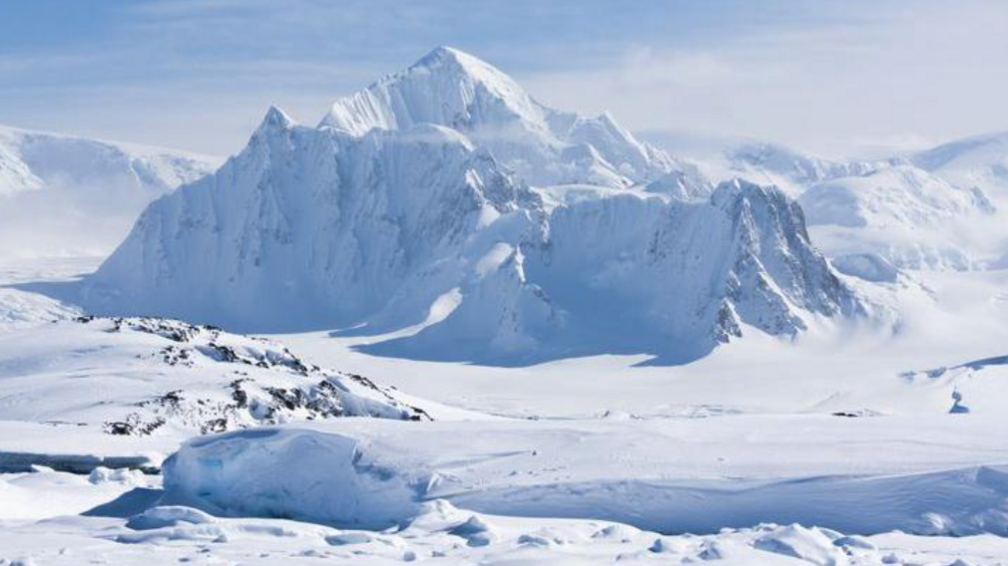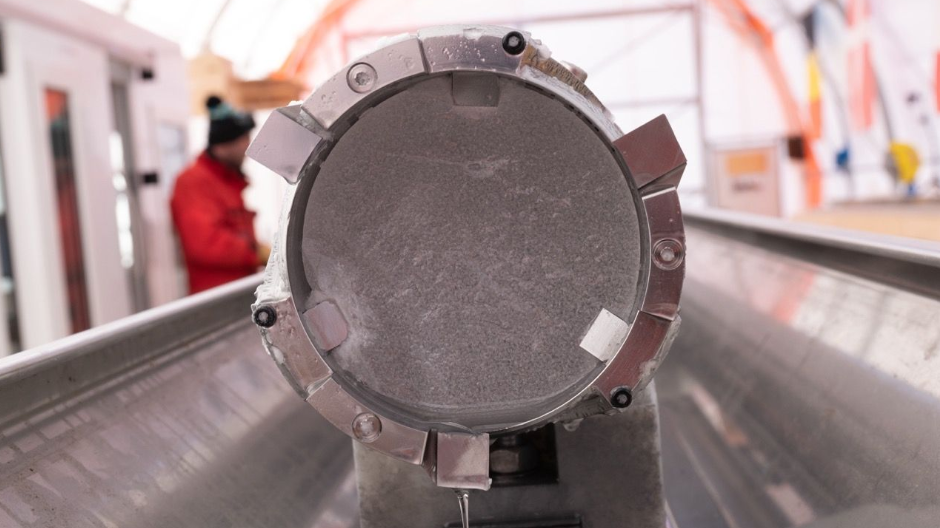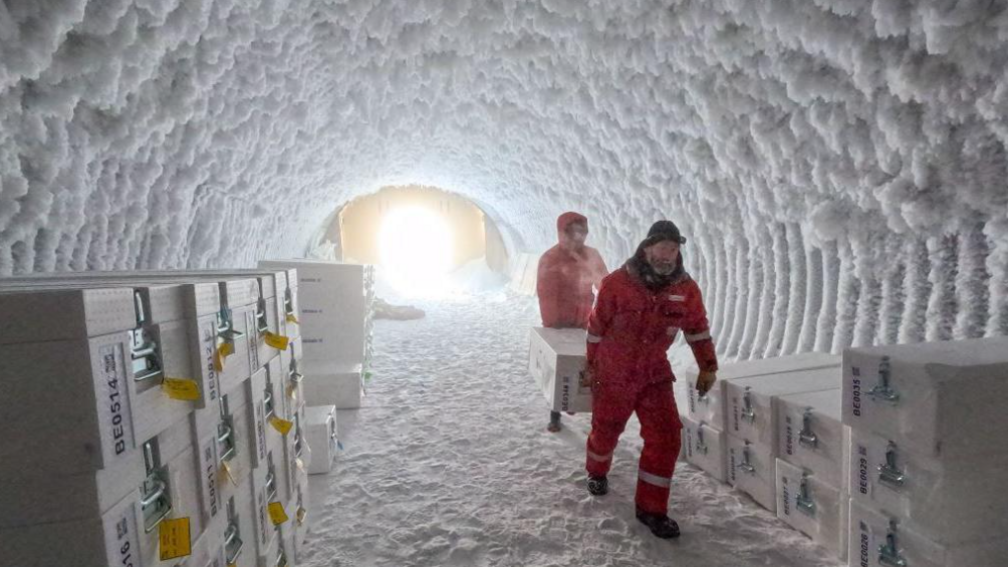UK scientists melt 'world's oldest ice' to reveal Earth's ancient history

- Published
A sample of the world's oldest ice has arrived at a research station in the UK, ready for testing.
The ice was extracted from the deep ocean in East Antarctica earlier this year and is thought to be around 1.2 million years old.
Scientists are now melting the ice, in the hope that it will reveal more about the Earth's environmental history.
It's also hoped that by studying historic temperature and greenhouse gas levels, it will be possible to predict future climate change.
More science news
Air pollution levels falling in the UK, say scientists
- Published16 July
High temperatures bringing loads of ladybirds, say experts
- Published14 July
What's the latest?

For the next seven weeks, a team based in the UK city of Cambridge will slowly melt the Antarctic ice.
But it's not the ice itself the scientists are interested in, it's what's trapped within it.
This will release ancient dust, volcanic ash, and even tiny marine algae that were locked inside when water turned to ice.
These materials can help scientists better understand what wind patterns, temperature, and sea levels were like more than a million years ago.
Scientists are excited about what the melted ice could reveal.
Dr Liz Thomas, head of ice core research at the British Antarctic Survey explained: "This is a completely unknown period of our Earth's history
"Our climate system has been through so many different changes that we really need to be able to go back in time to understand these different processes and different tipping points," Dr Thomas added.
This air and other particles formed hundreds of thousands of years ago, which scientists hope could provide us with important information about the Earth's past.
It's thought it could also help solved one of the major mysteries in our planet's climate history.
How was the ice extracted?

Scientists stored the ancient ice inside frozen caves
The ice was extracted by an international team of scientists, which was led by the Italian Institute of Polar Sciences and included 10 European nations.
Working at temperatures of -35C, the team drilled a 1.7 mile-long piece of ice from deep within Antarctica.
That's the same length as just over 26-and-a-half professional football pitches!
The ice was chopped into one metre blocks and was carefully transported by boat from Antarctica and then by road to various scientific laboratories in Europe - including the UK, Germany and Switzerland.
